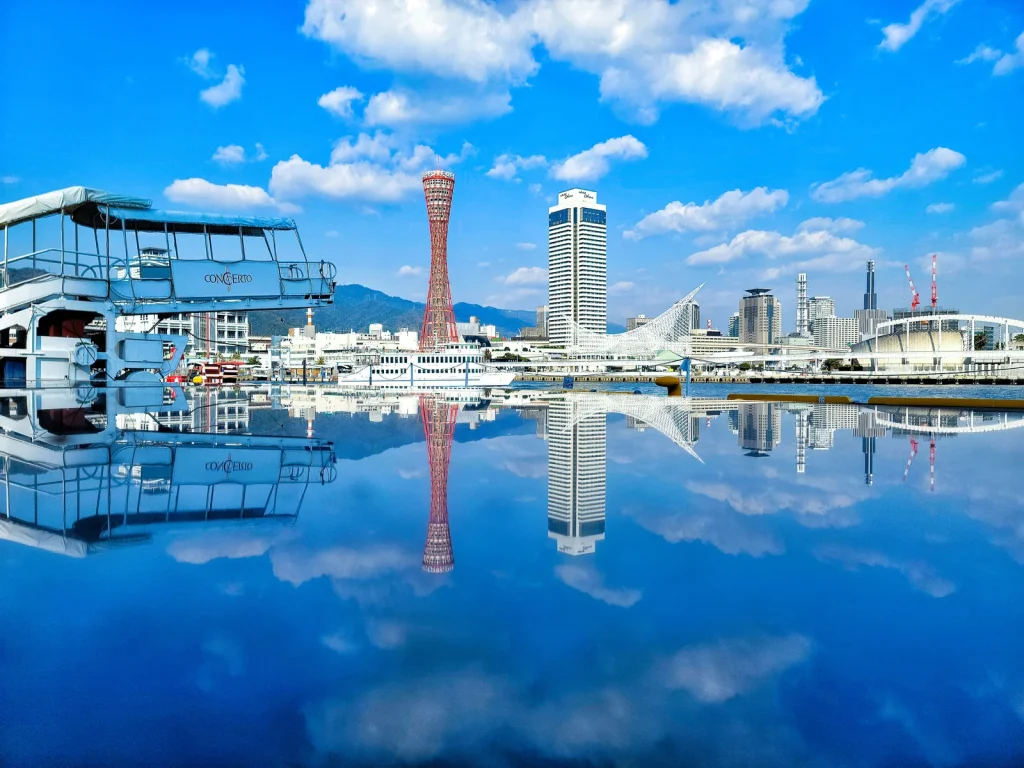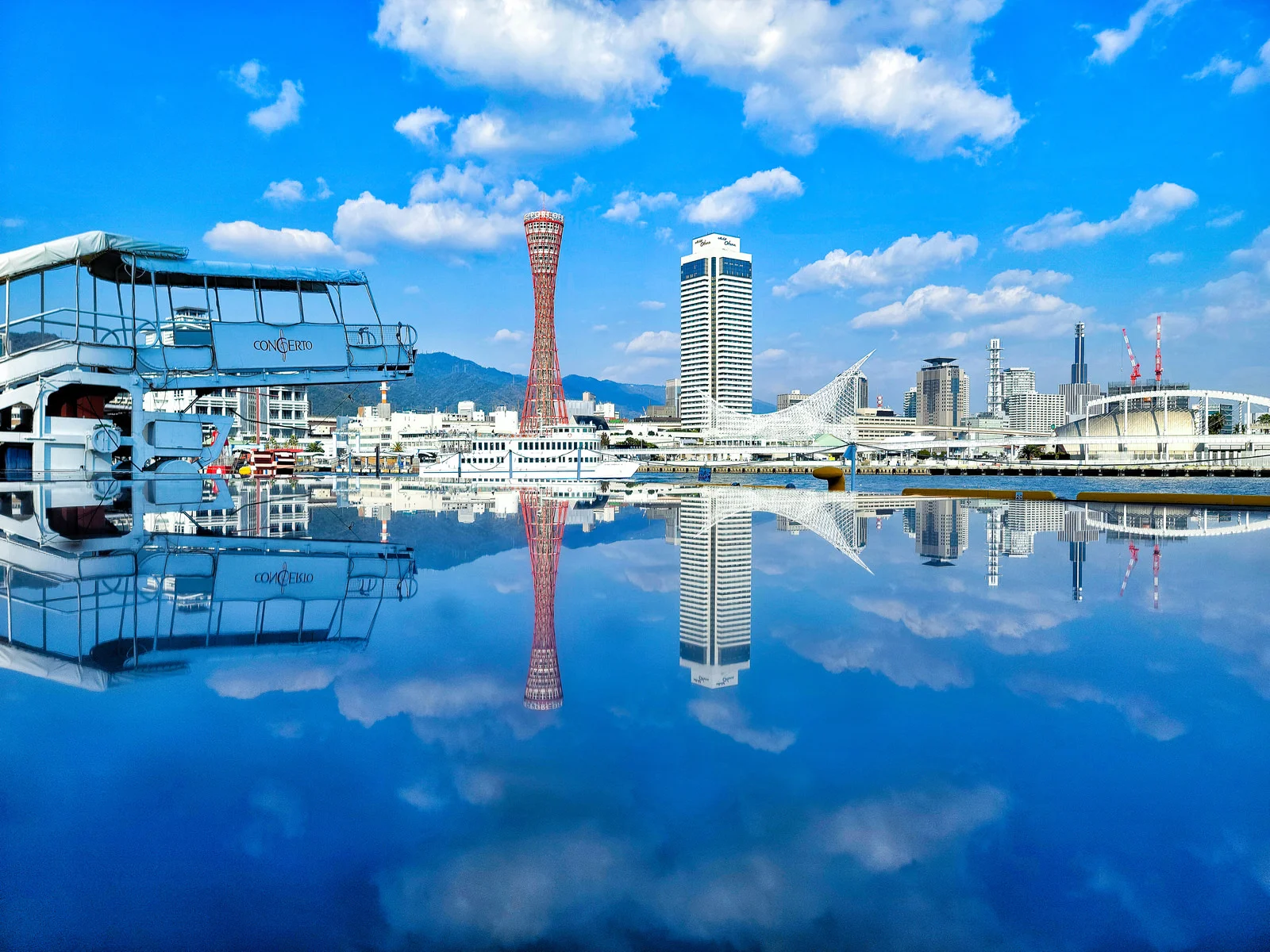Nestled between the Seto Inland Sea and the Rokko mountain range, Hyogo Prefecture beckons travelers with a captivating blend of cultural richness and natural wonders.
From the iconic Himeji Castle to the scenic landscapes of Awaji Island, every corner of this prefecture tells a story of history, tradition, and gastronomic delights.
Join us on an immersive journey as we uncover the diverse facets of Hyogo, a region where heritage meets harmony.
Allure of Hyogo

1. Himeji Castle: A Beacon of Elegance
Our exploration begins with the majestic Himeji Castle, a UNESCO World Heritage site and a symbol of Japan’s feudal past. Known as the White Heron Castle for its pristine exterior, Himeji Castle stands as a beacon of elegance against the sky. Ascend its intricate network of towers and gates to behold panoramic views of Himeji city and experience the architectural marvel that has withstood centuries.
2. Kobe: The Culinary Capital
Venture into Kobe, a city celebrated as the culinary capital of Japan. Renowned for its Kobe beef, indulge in the succulent and marbled perfection of this world-famous delicacy. The historic Nankinmachi, or Chinatown, offers a tapestry of flavors with its diverse street food, while the harbor area presents a picturesque setting for dining with a view.
3. Arima Onsen: Soak in Tranquility
Discover serenity in Arima Onsen, one of Japan’s oldest hot spring resorts nestled in the Rokko Mountains. Immerse yourself in the healing waters of gold and silver springs, known for their therapeutic properties. Arima Onsen provides not only relaxation but also a glimpse into traditional Japanese ryokan culture, offering an authentic and rejuvenating experience.
4. Awaji Island: A Garden in the Sea
Embark on a journey to Awaji Island, a lush oasis in the Seto Inland Sea. Explore the mesmerizing Awaji Yumebutai, a complex of gardens and architecture designed by renowned architect Tadao Ando. Awaji Island is not just a feast for the eyes but also a haven for botanical enthusiasts, showcasing a rich variety of flora in its diverse gardens.
5. Takeda Castle Ruins: Castle in the Clouds
Hike to the ethereal Takeda Castle Ruins, often referred to as the “Castle in the Clouds.” Perched on a hilltop, this castle offers a surreal experience during the autumn season when the surrounding mist creates an otherworldly atmosphere. The panoramic views of the castle surrounded by a sea of clouds are a testament to the mystical charm of Hyogo’s historical sites.
6. Kinosaki Onsen: A Town of Seven Baths
Experience the charm of Kinosaki Onsen, a picturesque town renowned for its seven public baths. Stroll along willow-lined canals, don traditional yukata, and soak in the tranquil ambiance of each bathhouse. The town’s timeless appeal is heightened during the winter months when visitors can enjoy a “soto-yu meguri” (bathhouse hopping) experience.
7. Akashi Kaikyō Bridge: Engineering Marvel
Marvel at the Akashi Kaikyō Bridge, the world’s longest central span suspension bridge. Spanning the Akashi Strait, this engineering marvel offers breathtaking views of the sea and surrounding landscapes. Visit the Maiko Marine Promenade for a unique perspective as you walk along the bridge’s maintenance platform, suspended high above the water.
8. Nada Sake Breweries: Sip the Essence of Hyogo
Explore the Nada district, often referred to as the “Napa Valley of Sake.” Home to numerous sake breweries, Nada produces some of Japan’s finest sake. Take a brewery tour to witness the sake-making process and indulge in tastings, savoring the nuanced flavors of this traditional Japanese rice wine.
9. Mount Rokko: Panoramic Splendor
Ascend Mount Rokko for panoramic splendor that encompasses Osaka Bay, Kobe, and the distant Awaji Island. Whether by cable car or hiking trail, reaching the summit rewards visitors with breathtaking vistas. In addition to the natural beauty, Mount Rokko offers attractions like the Rokko International Musical Box Museum and the Rokkosan Snow Park in winter.
10. Tajima Cattle: Beyond Kobe Beef
Discover Tajima cattle, the breed behind the legendary Kobe beef, in the Tajima region of Hyogo. Visit local farms to understand the meticulous care involved in raising these cattle, known for their exceptional marbling and tenderness. Gain insights into the sustainable and traditional practices that contribute to the renowned quality of Hyogo’s beef.
11. Sumoto Castle: Island Stronghold
Uncover the history of Sumoto Castle on Awaji Island, an island stronghold with panoramic views of the Seto Inland Sea. While the current structure is a reconstruction, the castle’s strategic location and historical significance provide a glimpse into Japan’s feudal past.
12. Tamba Sasayama: Timeless Edo Atmosphere
Step back in time as you explore Tamba Sasayama, a town that retains a timeless Edo-period atmosphere. Wander through preserved samurai residences, traditional merchant houses, and historic streetscapes. Tamba Sasayama Castle, surrounded by cherry blossoms in spring, stands as a testament to the town’s rich cultural heritage.
13. Kuchiganaya Area: Hyogo’s Hidden Gem
Escape to the Kuchiganaya area, a hidden gem in Hyogo Prefecture known for its scenic beauty and historic charm. Stroll through the quaint streets lined with traditional houses, and visit the Kuchiganaya Machiya Museum to delve into the region’s cultural history. This lesser-known destination offers a peaceful retreat for those seeking tranquility and authenticity.
14. Nunobiki Falls: Nature’s Symphony in Kobe
Immerse yourself in nature’s symphony at Nunobiki Falls, a series of waterfalls cascading down Mount Rokko in Kobe. Accessible by a scenic hiking trail or a ropeway ride, Nunobiki Falls is a refreshing escape offering serenity and lush greenery just a stone’s throw away from the bustling city.
15. Banshu Ako: Samurai Heritage
Step into the samurai heritage of Banshu Ako, a city with a storied past and connections to the famous 47 Ronin incident. Visit the Ako Castle and the Oishi Shrine to delve into the history of these loyal retainers. The Ako Gishi Festival, held annually, pays homage to the bravery and loyalty of the 47 Ronin.
16. Tajima Yahei Sericulture Farm: Silk Tradition
Explore the Tajima Yahei Sericulture Farm in the Tajima region, where the tradition of sericulture has been preserved for centuries. Learn about the intricate process of silk production, from silkworm cultivation to the creation of delicate textiles. The farm offers hands-on experiences for visitors interested in understanding the craftsmanship behind Japan’s silk industry.
17. Nishinomiya Shrine: Annual Festival Extravaganza
Witness the grandeur of the Nishinomiya Shrine during the annual Nishinomiya Matsuri, one of Hyogo’s most renowned festivals. Held in early spring, the festival features vibrant processions, traditional performances, and a lively atmosphere. The shrine, dedicated to the Shinto deity Ebisu, becomes a focal point for cultural celebrations and community spirit.
18. Kinosaki Marine World: Aquatic Wonder
Dive into the aquatic wonder of Kinosaki Marine World, an aquarium that showcases the diverse marine life of the Japan Sea. Explore themed exhibits, including a penguin parade and interactive touch pools. The aquarium’s location near the Sea of Japan adds an extra layer of authenticity to the marine experience.
19. Nishiwaki City: Indigo Dyeing Tradition
Discover the indigo dyeing tradition in Nishiwaki City, a region known for its historical connection to indigo cultivation. Visit indigo dyeing workshops to witness the meticulous dyeing process and create your own indigo-dyed fabric. The rich blue hues produced in Nishiwaki have a cultural significance and are deeply rooted in the area’s heritage.
20. Awaji Puppet Theatre: Traditional Performing Arts
Experience the art of puppetry at the Awaji Puppet Theatre on Awaji Island. This traditional form of performing arts, known as “ningyo joruri,” combines puppetry, music, and storytelling. The theater’s performances showcase the craftsmanship of puppeteers and the rich cultural legacy of Awaji Island.
Conclusion:
In concluding our exploration of Hyogo Prefecture, we find ourselves immersed in a kaleidoscope of heritage and nature.
From the elegant silhouette of Himeji Castle to the culinary delights of Kobe, from the soothing hot springs of Arima to the panoramic views atop Mount Rokko, Hyogo unfolds as a multifaceted destination.
As we bid farewell to the vibrant festivals, historic landmarks, and serene landscapes, Hyogo leaves an indelible mark on our hearts.
The prefecture stands as a testament to the harmonious coexistence of tradition and modernity, where each element contributes to the rich tapestry of this cultural haven.
Hyogo invites travelers to unravel its stories, savor its flavors, and connect with the timeless elegance that defines this enchanting corner of Japan.



コメント